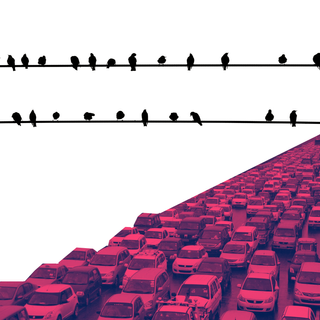A piece of a Himalayan glacier fell into the Rishiganga river in northern India Sunday, triggering an enormous flood in the Chamoli district of Uttarakhand that killed at least 11. In addition, hundreds of people are missing from the affected region, a majority of whom are believed to be workers at two nearby hydropower plants. The floods severely damaged these plants and dams, causing huge debris to flow downstream and endanger entire villages. As the nation’s attention gets diverted to this natural disaster, it renews the spotlight upon the existence (and proliferation) of these power plants, especially in regions that are known to be susceptible to avalanches and landslides.
The disaster signals the acceleration of the melting of Himalayan glaciers, which can cause intensive flooding, and extensive damage to dams and other hydropower plants built along rivers in Uttarakhand. The latest flooding, for example, swept away a whole dam on the Rishiganga river, and severely damaged another on the tributary Dhauliganga, washing away bridges, villages, homes, and people in its path.
The current event harks back to the Kedarnath floods of 2013, triggered by heavy monsoon rains and believed to have killed approximately 6,000 people. Because of the region’s susceptibility to intense flooding, the people of Raini village in Uttarakhand had even protested against the building of the Rishi Ganga Hydroelectric project (which got destroyed by the floods on Sunday), at the time telling the state’s High Court in a public interest litigation (PIL) how the stone blasting and crushing could cause huge damage to the ecology of the region.
Related on The Swaddle:
Report: More People Died Due to Climate Change in India Than Anywhere Else in the World in 2018
The government, in iterating why it grants approval to such hydro power projects, had cited acute power shortages in the state, and the high cost of purchasing electricity for its residents, as a major reason for greenlighting potential hydropower solutions.
But environmentalists have a different perspective. “Anyone can come and blast the hills here for building a hydel project in name of development. Nobody cares for ecology and impact of its devastation on the locals,” environmentalist Ravi Chopra, of the People’s Science Institute, tells the Hindustan Times. “Today’s incident is just another example of what we have done to our hill ecology,” he said, lodging his protest against the building of back-to-back dams in the state.
The proliferation of these dams in Uttarakhand goes against what the Supreme Court ruled in 2013, that no new hydroelectric plants should get passed in the state, and work be stopped on the 24 that already had clearance. At the time, Chopra had also headed a committee that released a warning report — “We had said in our report that the region above 2,000 meters in Uttarakhand in the valleys is not suited for hydroelectric projects. …when glaciers recede, there can be a lot of debris and moraines that flow down. Huge boulders also come along,” he said. Six of the 24 that had already been approved were greenlit after they were redesigned with modifications and safeguards to adhere to the court’s order. Now, some of these projects are crumbling under the glacier melt and resultant flooding, confirming fears environmentalists had expressed about these projects years ago.
“In this Himalayan area, there are 10,000 big and small glaciers so we should be very careful about building any development projects in this ecologically fragile region, especially as climate change makes it even more fragile,” Hridayesh Joshi, author of Rage of the River (that details the Kedarnath flooding) tells The Guardian. “But instead the government wants to exploit hydropower for income and gives approval to all these big dam projects on every river, who we then see flouting environmental laws. We can’t say these projects are entirely to blame for this latest disaster, but they are definitely one of the contributing factors.”




